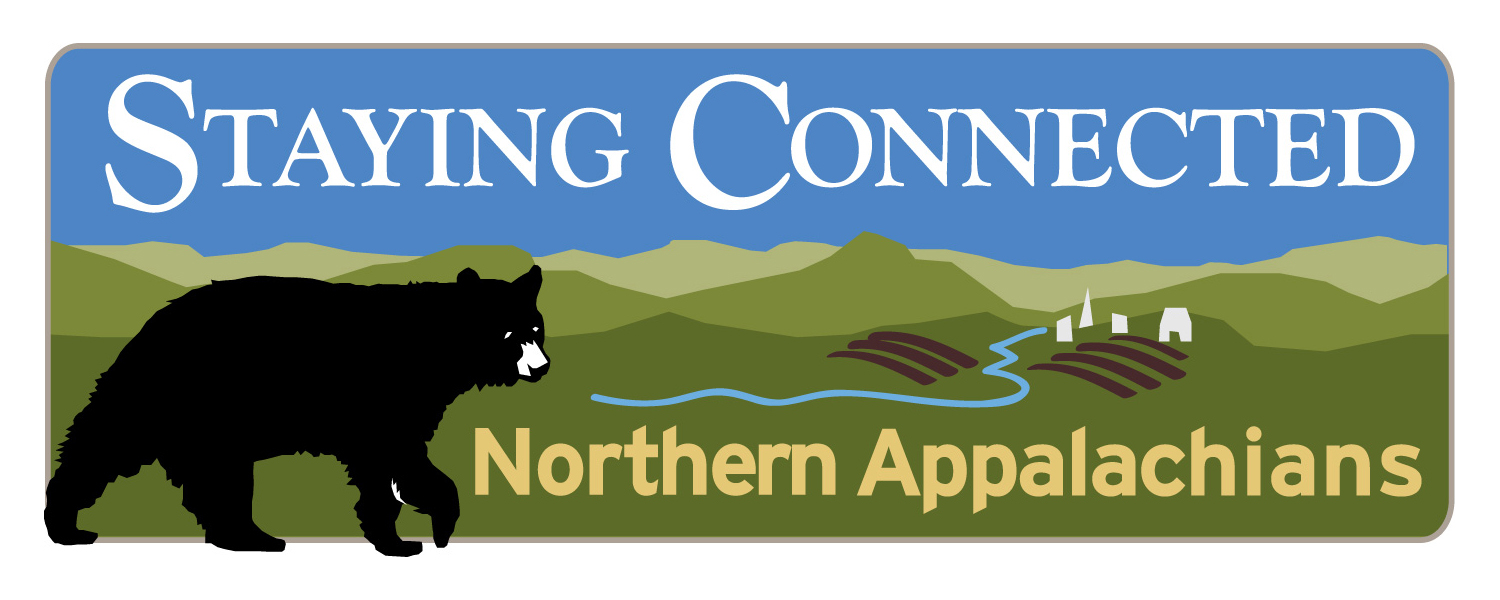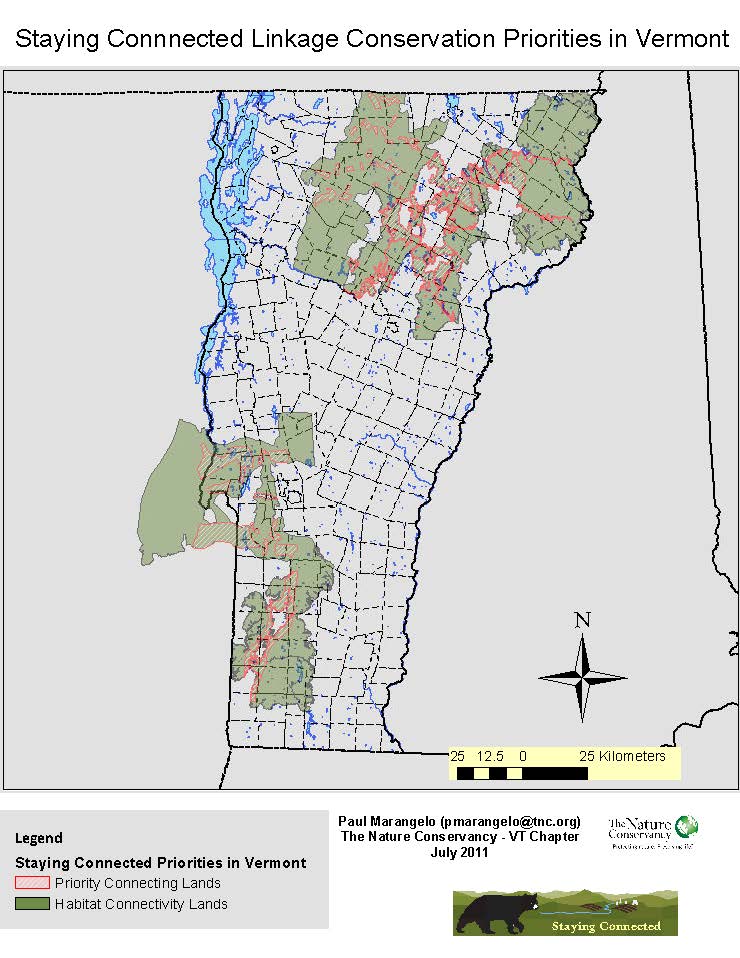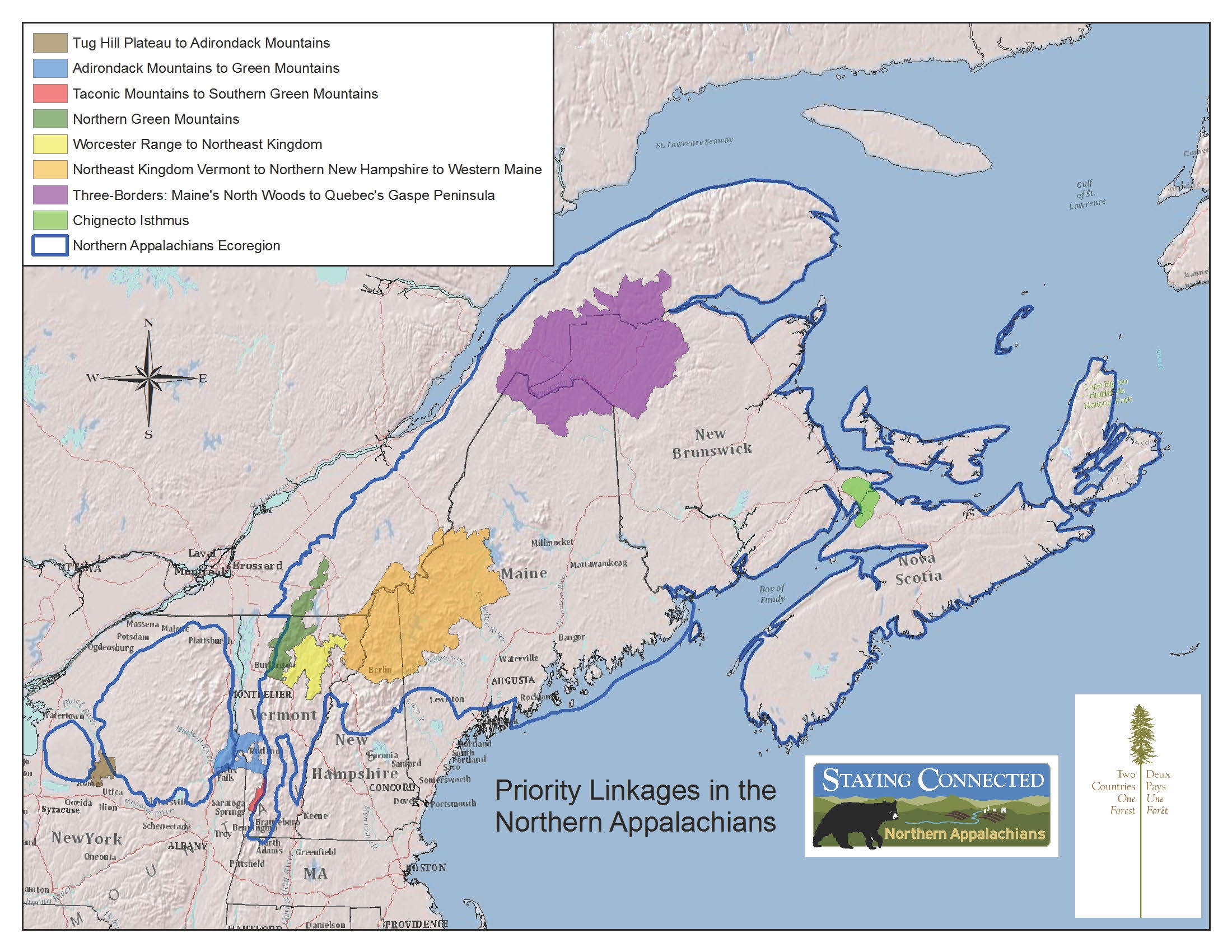The Staying Connected Initiative
The Staying Connected Initiative (SCI) is a bi-national partnership focused on sustaining and enhancing a connected forested landscape across the northern Appalachian-Acadian Region for the benefit of wildlife and humans. Staying Connected is focused on 9 key 'linkage areas' across the Northern Appalachian-Acadian ecoregion important for maintaining connected forest to allow for animal movement across the region. This region encompasses parts of 5 states, 3 provinces and 80+ million acres, and is the largest, most intact area of temperate broadleaf mixed forest in this hemisphere. Sustaining these linkages will help safeguard native wildlife and plants from the impacts of habitat fragmentation and climate change, and support human activities and values that are tied to the forested landscape.
The organization's origins go back to the identification of five top-priority habitat linkages in this area, found by Two Countries, One Forest, a consortium of scientists within the Nature Conservancy, the Nature Conservancy Canada, the Wildlife Conservation Society, and Wildlands Network among others. With this new information, in 2008 a conglomeration of representatives from these groups applied for and received a Competitive State Wildlife Grant from the U.S. Fish & Wildlife Service, specifically designed to support landscape-scale, cross-border conservation projects.
Staying Connected is a group of partner organizations, focused broadly on habitat connectivity, that work together and align themselves along both local and regional scales as well as among several work areas. SCI works across borders and at multiple scales to address these challenges. SCI brings together diverse partners in the U.S. and Canada to advance conservation science, land protection, community outreach, land use and transportation planning, and policy initiatives to conserve and enhance landscape connectivity
SCI partners in conservation science have done extensive GIS analysis of each linkage area identifying ecological priorities. Partners who work on land use planning have brought that regional vision of a connected landscape to on- the ground implementation, by helping town and regional planning commissions write plans and bylaws that reflect that importance. Simultaneously and relatedly, SCI partners working with transportation agencies seek to mitigate road barriers to wildlife movement with new bridge and culvert designs and monitoring, while land trust partners work on land protection with willing land owners. The approach brings a regional science vision to enable a range of local implementations by empowering local action.
STATEWIDE
Forest Land, Land Protection, Outreach, partnerships, Transportation, Walks and Talks, water, wetland, wildlife
The Staying Connected group was one of only twelve projects nation-wide awarded the Competitive State Wildlife Grant in 2009. The initiative boasts a collection of accomplishments, within three different categories: structural, enabling, and tangible accomplishments.
Structural accomplishments refer to the development of a high-functioning organization. This includes the creation of a steering community, an executive community, linkage teams, and working groups. These sub-groups have assisted in keeping the program running smoothly, and have also assisted in creating visibility as well as a positive brand/image for the organization. Another structural accomplishment was a connectivity conference held in November of 2012 that worked to further dialogue between partners and envision a future for Staying Connected.
Enabling accomplishments include the conservation science work that has been done within the group, as well as the development of model language for conservation easements to address connectivity. Because this language is not specific to any parcel, it can be easily catered to work with a variety of conservation easements.
Tangible accomplishments include the protection of over 300,000 acres in their first five years, and the inclusion of wildlife connectivity into a multitude of town and regional plans within their area.
' Maine Audubon
' Maine Department of Inland Fisheries and Wildlife
' Maine Department of Transportation
' National Wildlife Federation
' New Hampshire Audubon
' New Hampshire Department of Transportation
' New Hampshire Fish and Game Department
' New York Department of Transportation
' Northeast Wilderness Trust
' The Nature Conservancy (Chapters in NY, VT, NH, and ME)
' NY Department of Environmental Conservation
' Trust for Public Land
' Tug Hill Commission
' Tug Hill Tomorrow
' Two Countries, One Forest
' Vermont Agency of Transportation
' Vermont Department of Fish and Wildlife
' Vermont Land Trust
' Vermont Natural Resource Council
' Wildlands Network
' Wildlife Conservation Society
Reception of the Competitive State Wildlife Grant in 2009 was critical to success, as was partnering up with large organizations such as the Nature Conservancy, Nature Conservancy Canada and the Trust for Public Lands off the bat.
Involving a large and diverse mix of partners has also been critical, as it has allowed for the organization to take on projects in multiple realms (education, land use, science'etc.). Keeping that in mind, having a capable brigade of organizers, folks versed in project & management, and a fiscal agent (Nature Conservancy in early stages) has allowed for Staying Connected to blossom.
A spirit of collectivism is also responsible for the group's success; although each partner organization has their own mission and needs, representatives from each have been able to roll up their sleeves and do work on behalf of the larger partnership. This has allowed for the overarching project to flourish in addition to the smaller initiatives.
Engaging in partnerships at both small and large scales has worked to Staying Connected's advantage. For example, in developing conservation science, large organizations can be especially useful, whereas when doing tangible work on a specific parcel, engaging with small, local groups is necessary.
One of Staying Connected's main challenges is working on both large and small scales. Doing this effectively requires managing a multitude of groups, all with different missions and responsibilities. This difficulty cannot truly be eliminated due to the nature of the work; lots of people are undoubtedly involved when working with such large & crucial habitat linkages. Reshaping critical landscape is tangibly difficult, as the organization must work with laws and regulations in different states, provinces, and countries. Staying Connected must constantly adapt as policies within these different areas change.
Additionally, Logistics and planning can be difficult when so many people from such a vast geography are involved.
Funding can also be a challenge; both for sufficient funding to advance as much on-ground the work as possible, and to fund coordination support to enhance the partnership network. The amount of time folks devote to this project is incredible; even so there is always more work that can be done.
Staying Connected Initiative


